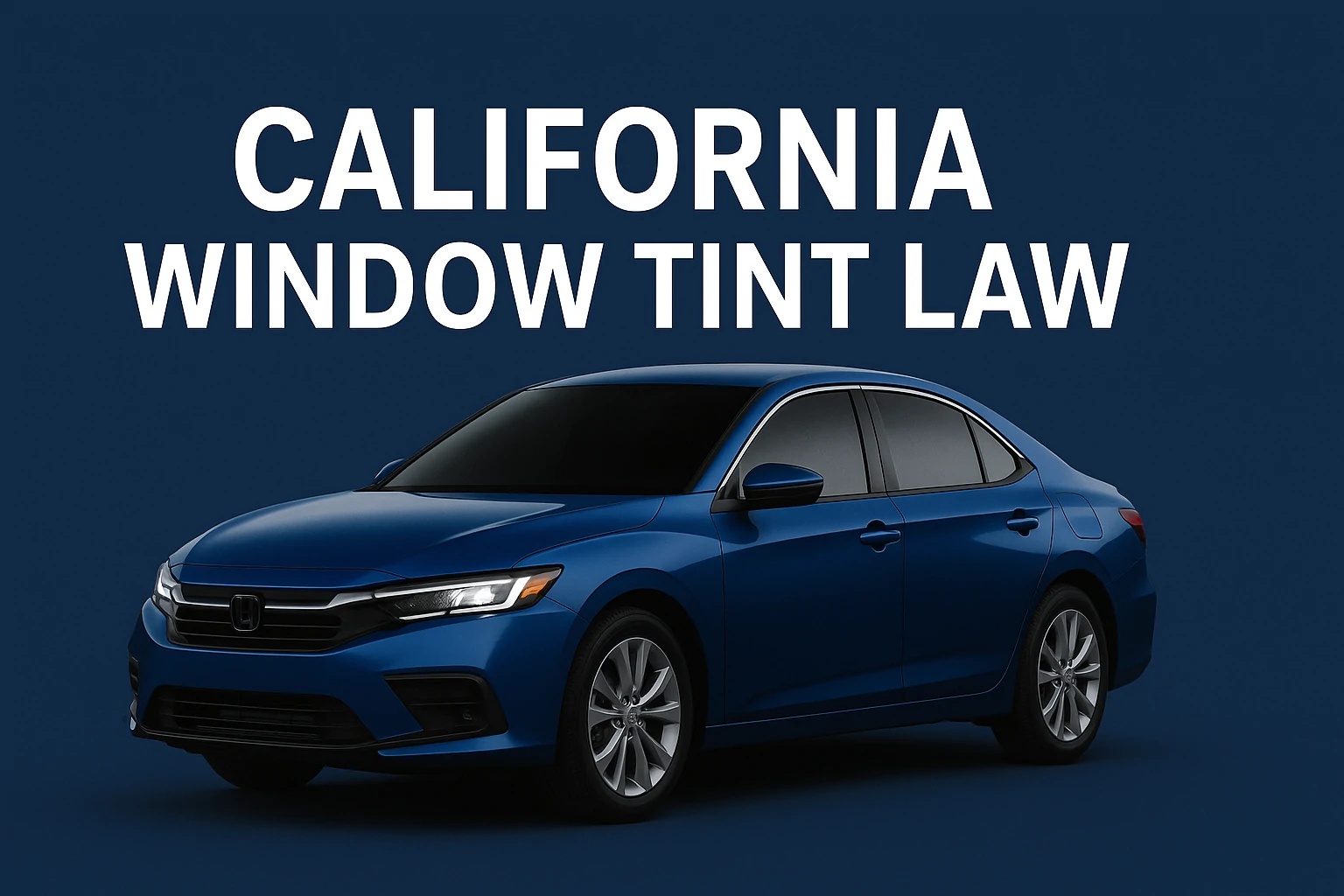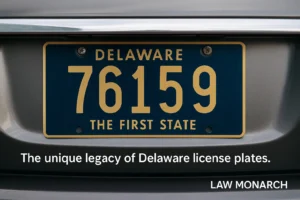California drivers like tinted windows. Tint can block heat, lower glare, and give your car a sleek look. Some use it to protect skin or hide valuables. Others want privacy or comfort. But the law limits how much tint you can use. If your windows go too dark, you may get pulled over. You could even face a fine.
The state has strict rules. Officers look for tint that blocks too much light. They check where the tint is placed. They also check the color. California wants drivers to see clearly and stay safe. The rules help avoid crashes. They also help law enforcement see inside vehicles.
Many people do not know what is legal. Some add tint without checking the rules. That can lead to trouble. It is better to understand the law before you change your windows. This article explains the current rules. You will learn what is allowed and how to avoid violations. It also covers medical exemptions, penalties, and tips to stay legal.
Legal Limits on Window Tint
California law uses a number called VLT. It means Visible Light Transmission. This number shows how much light passes through the window. A low VLT means a darker window. A high VLT means a clearer one.
The front side windows must allow at least 70% of light to pass through. That means they must stay almost clear. The law protects the driver’s view. If the tint is too dark, it can hide people or objects near the car. That can lead to accidents.
The windshield can have tint only on the top part. The law allows a strip no more than 4 inches from the top edge. The rest of the windshield must stay clear.
The back windows can have any level of tint. That includes both the rear side windows and the rear windshield. But your car must have two side mirrors if you tint the back window.
These rules apply to all drivers in the state. They apply even if your car came from another state. If you drive in California, you must follow California’s tint laws.
Where Tint Is Allowed and Where It Is Not
You can put legal tint on certain windows. But not all areas are allowed. Your front windshield must stay mostly clear. You can tint the upper part only. Your driver and passenger side windows must let in 70% of light. That allows you to see people, signs, and traffic clearly.
Your back windows can have darker tint. The law does not limit VLT on these windows. This lets people block sunlight or add privacy. But you must add both side mirrors if you darken the rear window.
The tint must not reflect like a mirror. It must not shine or bounce light back. California also bans tint with colors like red, blue, or amber. These colors can confuse emergency signals or hide lights. Stick with neutral shades like black or gray.
Factory vs Aftermarket Tint
Some cars come with tinted windows from the factory. These usually affect the rear windows only. Factory tint is part of the glass. It follows safety rules and often meets the law.
Aftermarket tint is added later. Shops apply it as a thin film. This film must follow the same rules. Many shops know the law. They use legal film and provide proof. But not all shops do the right thing.
Ask your installer for a certificate. The shop should place a sticker on the driver-side door. This shows that the tint is legal under California law. If you cannot find this proof, you may run into problems later.
Medical Exemptions for Special Cases
Some people need more tint because of health problems. California makes room for that. You can apply for a medical exemption. You must have a condition that makes sunlight dangerous to your health. That includes skin cancer, lupus, and other skin or eye issues.
To qualify, you need a note from a licensed doctor. The note must explain the medical need. It must include your name and the doctor’s contact details. You can keep the note in your car. You may need to show it to a police officer during a traffic stop.
Even with an exemption, you cannot add mirror tint. You cannot tint the full windshield. The law allows extra protection, but it still limits how much you can block the view.
What Happens If You Break the Law
Drivers who use illegal tint may face tickets. A first stop may bring a warning or a fix-it ticket. That means you must remove or replace the tint. You may also pay a small fine. If you do not fix it, the cost can rise. Repeat violations lead to bigger penalties.
Police can stop you if they think your tint is illegal. They may check the VLT with a handheld meter. If your windows block too much light, they can write a citation. Some officers focus on tint during routine stops. Others notice it while your car is parked.
Tint can also affect car inspections. Some stations may not pass your car if the windows go too dark. You may have to remove the film before renewing your registration.
Tips to Stay Legal
Before you tint your car, learn the law. Read the rules or ask a trusted tint shop. Stick to light film on front windows. Make sure the shop gives you proof. Keep the certificate in your car.
If you already have tint, test it. Some auto shops check VLT. They use the same tools as police. If the numbers are too low, consider replacing the film.
If you plan to drive outside California, check your state’s rules. Learn more about Louisiana tint laws if you travel through or live there.
Avoid buying cheap tint online. Some sellers do not follow state rules. The film may look fine but still break the law. Use film made for California vehicles.
If you drive to other states, keep California rules in mind. Your car must meet the rules of the state where it is registered. Even if other states allow darker tint, you must follow California law if your car is from California.
What to Do If You Get Pulled Over
Stay calm and polite. Tell the officer you understand the rules. If you believe your tint is legal, offer to show your certificate. If the officer gives you a ticket, follow the instructions. You may need to remove the tint and show proof.
Do not argue on the road. You can explain your case in court if needed. Judges often allow fixes for first-time violations. Keep records and show that you took action.
Conclusion
California window tint law sets clear limits. It helps drivers stay safe and keeps roads clear. You can tint your windows, but only if you follow the rules. Front windows must let in enough light. The top of the windshield can have a small strip. Back windows can be dark if your car has side mirrors.
Use legal film only. Do not use mirror tint or colored film. Keep proof of your tint in the car. If you need darker tint for medical reasons, carry a signed doctor’s note. Stay within the law to avoid tickets, stops, or failed inspections.
Tint adds comfort and protects your car. But it must follow state law. Learn the rules and stick to them. That way, you stay safe and avoid fines.
Learn more in our full guide on the California Sick Leave Law 2024.
Common Questions
Q. How dark can I tint my front windows in California?
Front side windows must let in at least 70% of visible light. Only light tint is legal on these windows.
Q. What are the rules for tint on the windshield?
You can tint only the top 4 inches of the windshield. The film must be non-reflective. The rest of the glass must stay clear.
Q. Is dark tint allowed on back windows?
You can use any tint level on back side windows and the rear window. Your car must have two working side mirrors.
Q. Can I use red, blue, or shiny tint film in California?
California does not allow red, blue, or amber tint. Reflective or mirror-like film is also banned on all windows.
Q. What if I need dark tint for health reasons?
You can get a medical exemption with a signed letter from a licensed doctor. The letter must state your condition and the need for extra sun protection.




